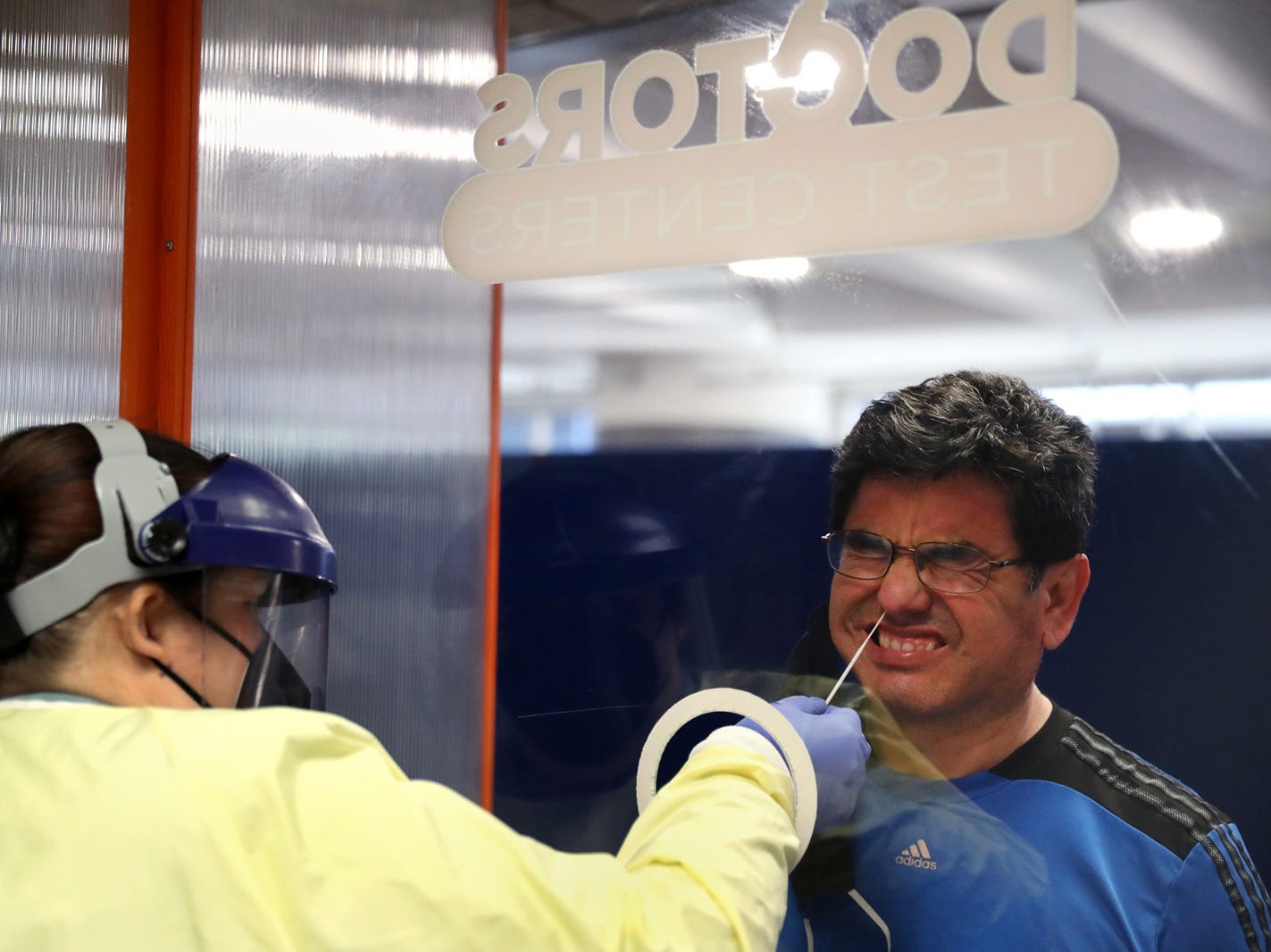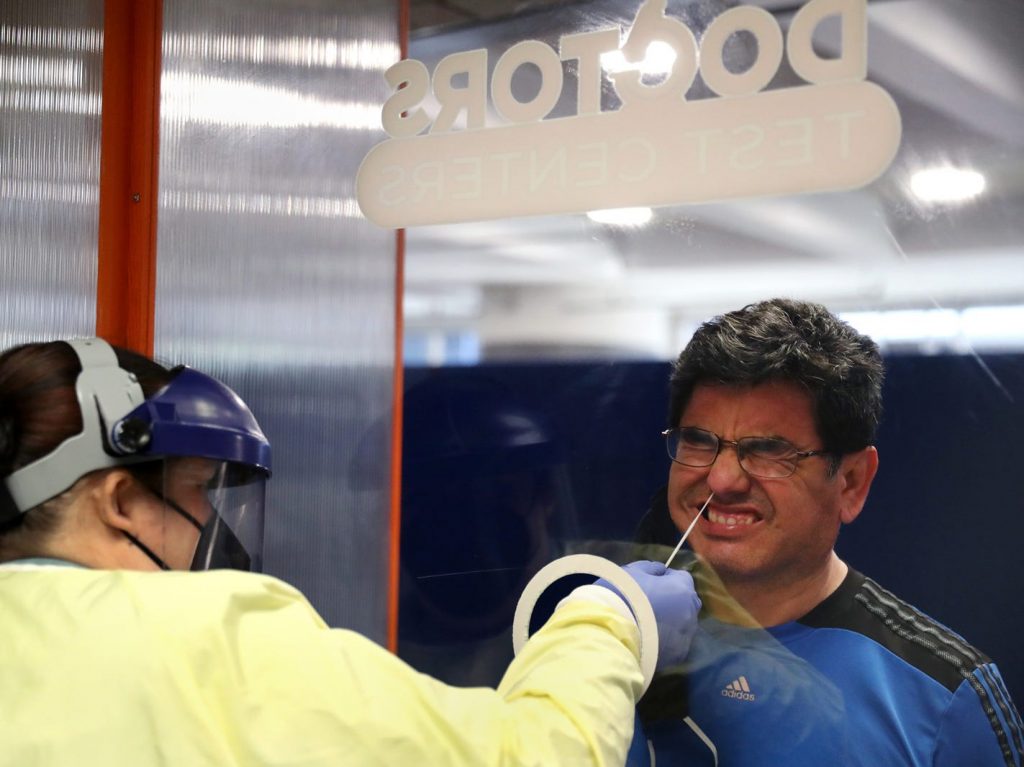
Chris Sweda/Chicago Tribune/Tribune News Service/Getty Images
- A runny nose, headache, or sore throat could be symptoms of either COVID-19 or a bad cold.
- Experts said it's tough to know the difference between the two from symptoms alone – so don't self-diagnose.
- If you have respiratory symptoms, stay at home and get a test to rule out COVID-19, they said.
People should take a COVID-19 test rather than assume symptoms such as a runny nose or sneezing are due to a cold or flu, experts said.
COVID-19, a cold, and flu have overlapping symptoms, especially for people who have had two doses of a COVID-19 shot, which can make it hard to know the difference. Taking a COVID-19 test is the only way to be sure you haven't contracted the virus.
Christina Marriott, chief executive of the UK's Royal Society for Public Health, said that fully vaccinated people typically presented with less severe symptoms than unvaccinated people. These could include headache, runny nose, sneezing, sore throat, and loss of smell, she told The Independent.
"As the flu season approaches, it's important for people who've been fully vaccinated to stay vigilant for cold-like symptoms, and get tested if they're living or working around people who are at greater risk from the disease," she told The Independent.
If you have symptoms, stay at home
Alan McNally, professor of microbial evolutionary genomics at the University of Birmingham, said anyone with respiratory symptoms should stay at home to stop transmission and get a test to rule out COVID-19.
Trying to self-diagnose is a "sure fire way to send COVID-19 rates soaring again," he said in a statement.
Professor Irene Petersen, professor of epidemiology and health informatics at University College London, said that a runny nose and headache "are symptoms of many infections, but may be the first and only symptoms of COVID-19."
Anyone with these symptoms should use quick lateral flow tests "for a few days," she told The Independent.
"The first few lateral flow tests may be negative, but if you have COVID the tests are likely to become positive within a couple of days," she said, per The Independent. "If you know other people around you have COVID, the likelihood your runny nose and/or headache is also COVID is much higher."
Alex Richter, professor of clinical immunology at the University of Birmingham in central England, said in a statement that only a lab COVID-19 test can differentiate between a cold and COVID-19. "Lateral flow testing can help with screening, but if someone has symptoms then they should go for a PCR swab test," he said.
Professor Tim Spector, who runs the Zoe symptom tracker app with more than 4.7 million users, said on YouTube in September that nearly 50% of people who had a positive lab COVID-19 test didn't have "classical" symptoms of cough, temperature, and loss of smell.
"If you do have a cold, think, 'It could be COVID', and keep your distance until you know whether it is or not," he said.
Once COVID-19 is ruled out, a cold was usually relatively harmless for most people, although more people could get them as lockdown eased and people mixed, said Neil Mabbott, personal chair in immunopathology at the University of Edinburgh.
"Our immune systems have had limited exposure to colds over the past 18 months, so our immunity to these diseases will have waned during this period and will be less effective against colds than would be expected normally," he said in a statement.
"Self-isolating with a cold shouldn't be necessary, but increased hygiene will help to limit spread," he said.

